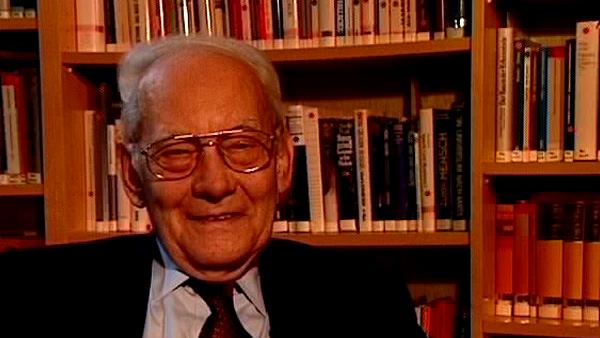NEXT STORY

Setting parameters for the kinetic theory of replication
RELATED STORIES

NEXT STORY

Setting parameters for the kinetic theory of replication
RELATED STORIES



I made a kinetic theory of replication, which applies to molecules and not to organisms... to individuals, as in the case of Darwin. And I found if molecules reproduce like nucleic acids do, and if they make mistake, I have a kinetic equation which says the temporal dependence of that concentration involves a term which says inherent autocatalysis or its proportionl to its consonant... it has a term which says mutation, it makes with a certain probability any possible mutation according to the number of errors. I had a whole set of equations with the matrix and there was a mathematical way to solve these set of equations, and out came the quasispecies. In other words it shows it's not true, but one always thought about Darwinian evolution, it's not the wild type, a single type, which gets to selection, it's the quasispecies that is a... well, mathematically it's a principle access transformation. You have a matrix, you diagonalize your matrix, and you find that what is selected is not the single molecular species but rather a clan of species, and due to their couplings among... making themselves via mutations... you select this whole clan, and it is not the single species which has to be best. The clan as a community has to be the best reproductive behaviour, then it comes out.
So the quasispecies... I didn't make a theory of quasispecies... the quasispecies was a result of this kinetic theory of replication.
[Q] So the advantage is for selection, not the individual, but a clan with... surrounded by many low error mutants, and the advantage of it is, if the boundary conditions change, that it is much more dynamic and flexible to adjust to new conditions.
Yes. Now you see already the difference to simple Darwinian type of behaviour. You produce a quasispecies, a large distribution of mutants, And everything is tested in that, and the settles... the population settles in a range where you have the best clan of species, with an average sequence in the middle. Now if you want to get selection by... if you change your environment, and adapt it to a new environment, you don't take anything inside the quasispecies, you have to take something you have not yet tested, and that's at the periphery. So the next one which gets selected is something which appears de novo at the periphery of the equation and therefore it's certainly a punctuated type of evolution.
Nobel Prize winning German biophysical chemist, Manfred Eigen (1927-2019), was best known for his work on fast chemical reactions and his development of ways to accurately measure these reactions down to the nearest billionth of a second. He published over 100 papers with topics ranging from hydrogen bridges of nucleic acids to the storage of information in the central nervous system.
Title: The kinetic theory of replication, leading to the quasispecies
Listeners: Ruthild Winkler-Oswatitch
Ruthild Winkler-Oswatitsch is the eldest daughter of the Austrian physicist Klaus Osatitsch, an internationally renowned expert in gas dynamics, and his wife Hedwig Oswatitsch-Klabinus. She was born in the German university town of Göttingen where her father worked at the Kaiser Wilhelm Institute of Aerodynamics under Ludwig Prandtl. After World War II she was educated in Stockholm, Sweden, where her father was then a research scientist and lecturer at the Royal Institute of Technology.
In 1961 Ruthild Winkler-Oswatitsch enrolled in Chemistry at the Technical University of Vienna where she received her PhD in 1969 with a dissertation on "Fast complex reactions of alkali ions with biological membrane carriers". The experimental work for her thesis was carried out at the Max Planck Institute for Physical Chemistry in Göttingen under Manfred Eigen.
From 1971 to the present Ruthild Winkler-Oswatitsch has been working as a research scientist at the Max Planck Institute in Göttingen in the Department of Chemical Kinetics which is headed by Manfred Eigen. Her interest was first focused on an application of relaxation techniques to the study of fast biological reactions. Thereafter, she engaged in theoretical studies on molecular evolution and developed game models for representing the underlying chemical proceses. Together with Manfred Eigen she wrote the widely noted book, "Laws of the Game" (Alfred A. Knopf Inc. 1981 and Princeton University Press, 1993). Her more recent studies were concerned with comparative sequence analysis of nucleic acids in order to find out the age of the genetic code and the time course of the early evolution of life. For the last decade she has been successfully establishing industrial applications in the field of evolutionary biotechnology.
Tags: Quasispecies, kinetic theory of replication, nucleic acids, wild type, principle access transformation, evolution, Charles Robert Darwin
Duration: 3 minutes, 2 seconds
Date story recorded: July 1997
Date story went live: 24 January 2008